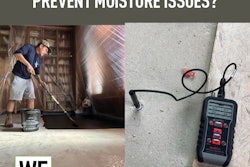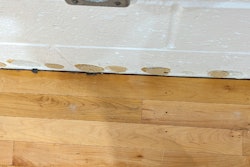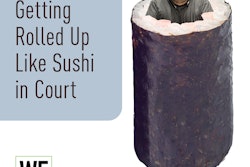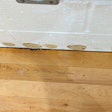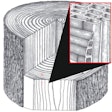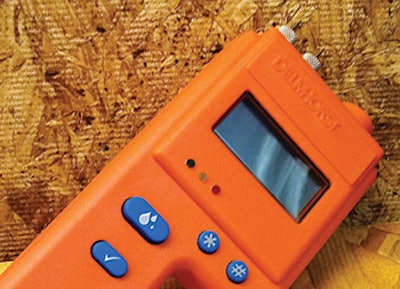
The Problem
I was contacted by a hardwood floor installer in South Carolina to determine why his moisture meter was displaying unusually high readings of the subfloor prior to the installation of hardwood flooring.
The Procedure
The installer was using a pin moisture meter on the 23/32-inch-thick subfloor of a 2,800-square-foot, single-family home before installing 21/4-inch prefinished oak flooring. The subfloor had been installed on joists 16 inches o.c. over a crawl space.
Even though the home had been properly dried in, the windows and doors had been installed and the HVAC system was fully functional, the meter on the subfloor was reporting a moisture content of 18 percent, well above a reading that typically should not have exceeded 12 percent.
The Cause
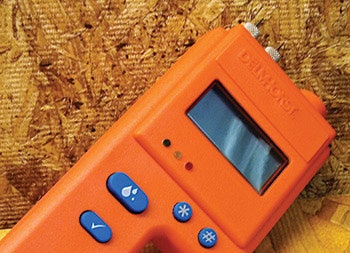
How to Fix the Floor
Ideally, you will not have to "fix the floor" if you use a properly adjusted moisture meter before installing your first plank. Most moisture meters are calibrated at the factory to give moisture content for Douglas fir. Whether you are testing subflooring or wood flooring, you must adjust your reading, either by using a chart or by using the correct setting on your moisture meter. For example, settings for OSB or plywood, or for maple or cumaru, will require adjusting your moisture meter so you get an accurate reading. Settings can even be different for the same material but different brands of subflooring, like OSB. When in doubt, check with your moisture meter manufacturer to find out exactly which setting to use. And be aware that each moisture meter is different, too, so the right setting on one meter might be the wrong one on a different brand.
If you know your moisture meter is on the right setting but you still think your readings are off, you might want to check that your moisture meter is calibrated correctly.
Having the wrong reading on your meter can be a costly mistake-if you install a hardwood floor over a subfloor that is too wet, for example, you risk ending up with a cupped floor. Cupping can be an expensive repair, whether you end up having to resand the entire floor once it dries or, in some cases, having to replace both the affected hardwood and subfloor.
In the Future
You can have the best equipment in the world, but if you don't use it as intended, you're wasting time and money-now and over the long term. Installers should invest in education and training covering the latest tools and techniques designed for job-site efficiencies. Industry associations, such as the National Wood Flooring Association, and building product manufacturers all offer education for industry professionals on available products, technical specifications and construction industry best practices.
For detailed information on using moisture meters, see the article "Understanding How to Measure Moisture Can Avert Job-Site Disasters" in the April/May 2013 issue of HF.














